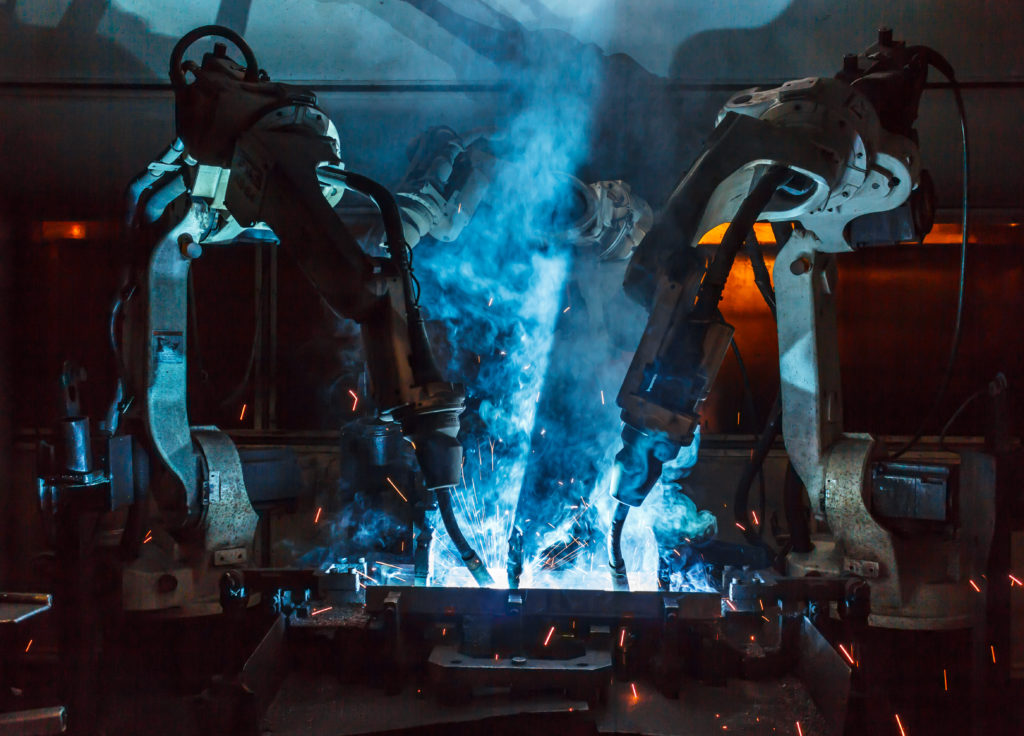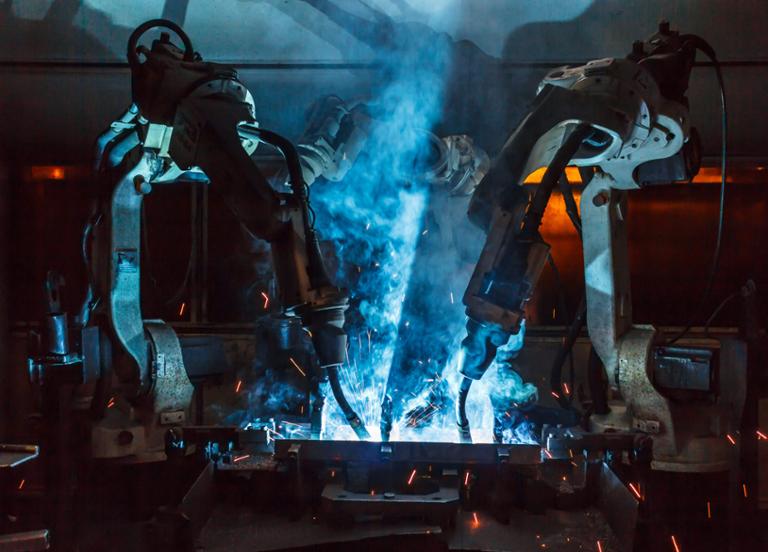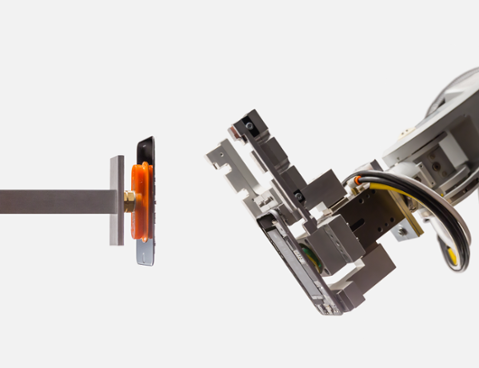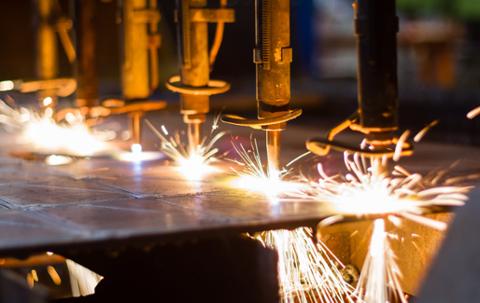 In case you harbored any doubts about it, Apple CEO Tim Cook thinks that advanced manufacturing still has a place in the U.S. economy. “The likelihood of robotics absorbing an assembly-type thing fairly quickly is high,” he recently told Bloomberg. “But in advanced manufacturing, there’s going to be a lot of jobs.” Cook went on to cite Corning as an example of an American company that has embraced advanced manufacturing. “We’re working with them on things that have American innovation in them and create a good number of jobs.” Although Apple manufactures an overwhelming majority of its devices at enormous facilities overseas, it recently pledged $1 billion to manufacturing in the United States. Apple has also claimed on its corporate website that it “supports” 112,600 U.S. manufacturing jobs via its suppliers (with 90,000 supplier and manufacturer jobs added over the past year), but that reporting is unclear if those employees are solely supported by Apple’s business. For example, does Apple count a supplier’s employee who not only puts together components for the iPhone, but also works on products from Microsoft and Hewlett-Packard? In any case, Cook used the Bloomberg interview to claim that Apple is also using its resources to build a robust pipeline of student developers, who one day will presumably create the next generation of apps and services. Indeed, Apple has spent the past year aggressively touting initiatives such as Swift Playgrounds, which teaches people to program in Swift, Apple’s latest programming language. The most recent update to Swift Playgrounds (v1.5) includes control over third-party platforms such as drones. “We can change diversity by doing this,” Cook said, alluding to those student developers. “We can begin to help people who have been left behind by the tech resurgence.” Although some people may perceive U.S. manufacturing as declining rapidly, there are signs that certain segments—such as the advanced technology manufacturing cited by Cook—are stable, if not on the rise. Last year, CompTIA issued a report suggesting that the number of tech manufacturing jobs actually increased by 3,700 between 2014 and 2015, hitting 1.14 million. The U.S. Bureau of Labor Statistics (BLS) usually shows the number of manufacturing jobs as fluctuating throughout the year. So manufacturing is alive—but as with any other industry, it needs continual investment.
In case you harbored any doubts about it, Apple CEO Tim Cook thinks that advanced manufacturing still has a place in the U.S. economy. “The likelihood of robotics absorbing an assembly-type thing fairly quickly is high,” he recently told Bloomberg. “But in advanced manufacturing, there’s going to be a lot of jobs.” Cook went on to cite Corning as an example of an American company that has embraced advanced manufacturing. “We’re working with them on things that have American innovation in them and create a good number of jobs.” Although Apple manufactures an overwhelming majority of its devices at enormous facilities overseas, it recently pledged $1 billion to manufacturing in the United States. Apple has also claimed on its corporate website that it “supports” 112,600 U.S. manufacturing jobs via its suppliers (with 90,000 supplier and manufacturer jobs added over the past year), but that reporting is unclear if those employees are solely supported by Apple’s business. For example, does Apple count a supplier’s employee who not only puts together components for the iPhone, but also works on products from Microsoft and Hewlett-Packard? In any case, Cook used the Bloomberg interview to claim that Apple is also using its resources to build a robust pipeline of student developers, who one day will presumably create the next generation of apps and services. Indeed, Apple has spent the past year aggressively touting initiatives such as Swift Playgrounds, which teaches people to program in Swift, Apple’s latest programming language. The most recent update to Swift Playgrounds (v1.5) includes control over third-party platforms such as drones. “We can change diversity by doing this,” Cook said, alluding to those student developers. “We can begin to help people who have been left behind by the tech resurgence.” Although some people may perceive U.S. manufacturing as declining rapidly, there are signs that certain segments—such as the advanced technology manufacturing cited by Cook—are stable, if not on the rise. Last year, CompTIA issued a report suggesting that the number of tech manufacturing jobs actually increased by 3,700 between 2014 and 2015, hitting 1.14 million. The U.S. Bureau of Labor Statistics (BLS) usually shows the number of manufacturing jobs as fluctuating throughout the year. So manufacturing is alive—but as with any other industry, it needs continual investment. Apple CEO Talks Manufacturing, Developer Jobs
 In case you harbored any doubts about it, Apple CEO Tim Cook thinks that advanced manufacturing still has a place in the U.S. economy. “The likelihood of robotics absorbing an assembly-type thing fairly quickly is high,” he recently told Bloomberg. “But in advanced manufacturing, there’s going to be a lot of jobs.” Cook went on to cite Corning as an example of an American company that has embraced advanced manufacturing. “We’re working with them on things that have American innovation in them and create a good number of jobs.” Although Apple manufactures an overwhelming majority of its devices at enormous facilities overseas, it recently pledged $1 billion to manufacturing in the United States. Apple has also claimed on its corporate website that it “supports” 112,600 U.S. manufacturing jobs via its suppliers (with 90,000 supplier and manufacturer jobs added over the past year), but that reporting is unclear if those employees are solely supported by Apple’s business. For example, does Apple count a supplier’s employee who not only puts together components for the iPhone, but also works on products from Microsoft and Hewlett-Packard? In any case, Cook used the Bloomberg interview to claim that Apple is also using its resources to build a robust pipeline of student developers, who one day will presumably create the next generation of apps and services. Indeed, Apple has spent the past year aggressively touting initiatives such as Swift Playgrounds, which teaches people to program in Swift, Apple’s latest programming language. The most recent update to Swift Playgrounds (v1.5) includes control over third-party platforms such as drones. “We can change diversity by doing this,” Cook said, alluding to those student developers. “We can begin to help people who have been left behind by the tech resurgence.” Although some people may perceive U.S. manufacturing as declining rapidly, there are signs that certain segments—such as the advanced technology manufacturing cited by Cook—are stable, if not on the rise. Last year, CompTIA issued a report suggesting that the number of tech manufacturing jobs actually increased by 3,700 between 2014 and 2015, hitting 1.14 million. The U.S. Bureau of Labor Statistics (BLS) usually shows the number of manufacturing jobs as fluctuating throughout the year. So manufacturing is alive—but as with any other industry, it needs continual investment.
In case you harbored any doubts about it, Apple CEO Tim Cook thinks that advanced manufacturing still has a place in the U.S. economy. “The likelihood of robotics absorbing an assembly-type thing fairly quickly is high,” he recently told Bloomberg. “But in advanced manufacturing, there’s going to be a lot of jobs.” Cook went on to cite Corning as an example of an American company that has embraced advanced manufacturing. “We’re working with them on things that have American innovation in them and create a good number of jobs.” Although Apple manufactures an overwhelming majority of its devices at enormous facilities overseas, it recently pledged $1 billion to manufacturing in the United States. Apple has also claimed on its corporate website that it “supports” 112,600 U.S. manufacturing jobs via its suppliers (with 90,000 supplier and manufacturer jobs added over the past year), but that reporting is unclear if those employees are solely supported by Apple’s business. For example, does Apple count a supplier’s employee who not only puts together components for the iPhone, but also works on products from Microsoft and Hewlett-Packard? In any case, Cook used the Bloomberg interview to claim that Apple is also using its resources to build a robust pipeline of student developers, who one day will presumably create the next generation of apps and services. Indeed, Apple has spent the past year aggressively touting initiatives such as Swift Playgrounds, which teaches people to program in Swift, Apple’s latest programming language. The most recent update to Swift Playgrounds (v1.5) includes control over third-party platforms such as drones. “We can change diversity by doing this,” Cook said, alluding to those student developers. “We can begin to help people who have been left behind by the tech resurgence.” Although some people may perceive U.S. manufacturing as declining rapidly, there are signs that certain segments—such as the advanced technology manufacturing cited by Cook—are stable, if not on the rise. Last year, CompTIA issued a report suggesting that the number of tech manufacturing jobs actually increased by 3,700 between 2014 and 2015, hitting 1.14 million. The U.S. Bureau of Labor Statistics (BLS) usually shows the number of manufacturing jobs as fluctuating throughout the year. So manufacturing is alive—but as with any other industry, it needs continual investment. 

